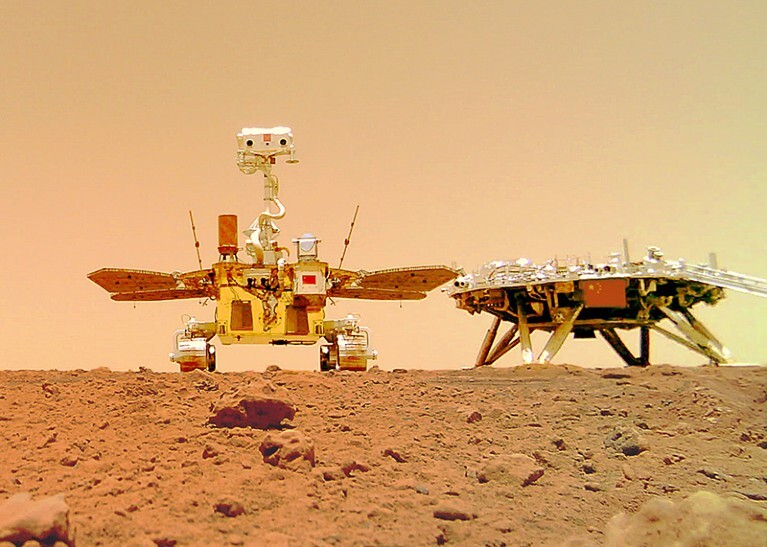12.11.2023

Chinese scientists have developed a new numerical model to simulate the atmospheric environment of Mars, offering research support for China's sample-return mission to the red planet.
The study was recently published in the journal Chinese Science Bulletin, which says that the China National Space Administration (CNSA) plans to implement the Tianwen-3 mission, to bring Martian samples back to Earth, around 2028.
To provide information on the meteorological conditions for spacecraft landing, scientists at the Institute of Atmospheric Physics under the Chinese Academy of Sciences, designed and built "GoMars," a global open planetary atmospheric model for Mars.
They used the model to replicate the three critical cycles of the Martian atmosphere: dust, water, and carbon dioxide, and validated it based on the observations of Zhurong, China's Mars rover, and NASA's Viking 1 and 2 landers, as well as the OpenMARS reanalysis dataset, a global record of Martian weather.
The results of the study showed that the GoMars model successfully reproduced the unique characteristics of surface pressure on Mars as recorded by the Zhurong rover and the two Viking landers. Furthermore, the model has good simulation performance for the surface temperature, zonal wind, polar ice, and dust.
With the rising complexity of Mars explorations, the demand for Martian weather forecasts is growing. The research team said it would further study weather processes such as dust storms on the planet, to offer possible support for future Mars missions, manned Mars landings, and resource development of the planet.
Launched on July 23, 2020, China's Tianwen-1, comprised of an orbiter, lander, and rover, arrived on Mars in February 2021. The Zhurong rover drove down from its landing platform to the Martian surface on May 22, 2021, and has conducted exploration of the red planet.
Lead researcher Wang Bin said, when compared with the Tianwen-1 mission organized by the CNSA, Tianwen-3 will include tasks of landing, sampling, and returning, requiring detailed information about Martian atmospheric conditions.
In 2022, the U.S. "Insight" and China's "Zhurong" rovers were shut down due to strong dust, and pebbles caught in a sandstorm damaged a wind sensor of the U.S. "Perseverance" rover.
Since the 1960s, many countries have been committed to the development of Martian atmospheric models.
"The dust cycle on Mars is as important as the water cycle on Earth," said Wang, stressing that dust weather has a significant impact on landing, departure, communication, energy supply, and equipment of Mars probes.
On May 18 last year, Zhurong switched to dormant mode after having traveled around 1,921.5 meters on the Martian surface. According to experts, the cause behind Zhurong's dormancy was unclear, but satellite photos showed that its solar panels were covered by dust.
"GoMars can be used to simulate the dust activity before and after the rover's dormancy, which can provide atmospheric environment data to analyze the possible causes of the dormancy," Wang said.
Far more than analyzing dust weather, the model can function as a "virtual Mars." Since observation data on Mars are much rarer than those on Earth, scientists sometimes need simulation data to learn about the remote planet and then help them select appropriate landing areas and design rovers.
"For example, GoMars can simulate the temperatures of the landing zone, and scientists can use these data to design materials that are suitable for building Mars rovers to cope with extreme cold," Wang explained.
Quelle: Xinhua

